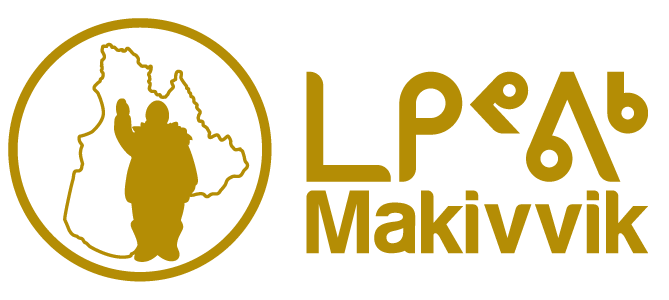ᒪᑭᕝᕕᒧᑦ-ᐊᐅᓚᑕᐅᔪᖅ ᓯᕗᓂᕐᒥ ᐊᖏᓕᒋᐊᕐᑕᐅᒍᒪᓯᒪᔪᖅ
ᑖᓂᐊᓪ ᑯᐊᑕ ᐊᒡᒐᔮᒥᓂᒃ ᐲᕐᓯᕋᑖᕐᑐᖅ ᐅᖄᓚᐅᑎᒃᑯᑦ ᐅᖄᓯᒐᒥ. ᐊᒥᔭᕐᓂᒃ, ᑎᕆᒐᓐᓂᐊᔭᓂᒃ ᐸᒥᐅᕐᑑᔭᓂᓪᓗ ᐊᒥᕐᓂᒃ ᐃᓯᕆᑦᓰᕕᒻᒨᓯᕋᑖᕐᓱᓂ ᓄᓇᕕᒻᒥ ᒥᕐᖁᓕᕆᕕᒻᒦᓱᓂ ᑰᑦᔪᐊᒦᑦᑐᒥ. ᐅᓂᒃᑳᑐᖅ ᑲᑎᒪᓂᐊᕈᓯᓕᐊᕐᓂᕕᓂᕐᒥᓂᒃ ᐊᐅᔭᐅᑎᓪᓗᒍ ᐊᑐᐃᓐᓇᕈᕐᑎᑕᐅᔪᒧᑦ ÉcoFaune Boréale-ᑯᓐᓄᑦ, ᒥᕐᖁᓕᕆᕕᒻᒧᑦ ᖃᐅᔨᓴᕐᕕᒋᔭᐅᑦᓱᓂᓘᕐᓱᓂ CEGEP de Saint-Félicien-ᒧᑦ, Mashteuiatsh, Que.-ᒦᑦᑐᒧᑦ. ᓄᓇᕕᒻᒥ ᒥᕐᖁᓕᕆᕕᒃ ᐊᐅᓚᑕᐅᓂᓕᒃ ᒪᑭᕝᕕᒧᑐᐊᑦᓯᐊᖅ, ᖃᐅᔨᓴᕐᓂᒧᓪᓗ ᐊᖏᖃᑎᒌᒍᑎ ᐊᑎᓕᐅᕐᕕᐅᓚᐅᕐᓯᒪᑦᓱᓂ 2019-ᒥ ᐊᑎᓕᐅᖃᑕᐅᑎᓪᓗᒋᑦ CEGEP-ᑯᑦ ᐊᑐᕐᓂᖃᕋᔭᕐᑐᒥᒃ 2023-2024 ᑮᓇᐅᔭᕐᑐᓂᖓᓄᑦ ᐊᕐᕌᒍᒧᑦ.
“ᓄᑖᓂᒃ ᒥᕐᖁᓕᕆᒍᓯᕐᓂᒃ ᐃᓕᑦᓯᕕᒋᓚᐅᔪᔭᕗᑦ ᑭᖑᓪᓕᐹᒥ ᐁᓯᒪᕕᒋᑦᓱᒋᑦ,” ᐅᖃᕐᑐᖅ ᑖᓂᐊᓪ. “ᐱᓯᑎᖕᖑᐸᓪᓕᐊᑐᐃᓐᓇᖁᒍᑦ. ᓄᑖᓂᒃ ᐱᓇᓱᒍᑎᑖᕆᓯᒪᔭᑦᑎᓂᒃ ᐃᓕᐅᕐᙯᓯᒪᓕᕐᓱᑕ, ᐅᐱᕐᖓᓴᐅᓚᐅᕐᑐᒥᓪᓗ ᐱᔭᕇᑦᓯᐊᓚᐅᔪᑦᓱᒋᑦ, ᐃᓱᐊᕐᓂᓴ-ᐅᓕᕐᑐᑦ ᐱᓇᓱᐊᕐᑕᕗᑦ ᐱᒐᓱᐊᒻᒪᕆᓗᐊᖕᖏᓂᕐᓴᐅᓕᕐᓱᑕ, ᐅᓪᓗᒥᓂᑕᐅᖕᖏᓂᕐᓴᓂᒃ ᐱᓇᓱᒍᓯᖃᖃᑦᑕᓚᐅᔪᒐᑦᑕ.”
ᐱᓇᓱᖃᑎᒌᓐᓂᑕᖃᕐᒥᓱᓂ ᑕᒪᓐᓇ. ᐊᕐᕌᒍᒥ ᒪᕐᕈᕕᑦᓱᑎᒃ ᐃᓕᓵᑦ ᖃᐅᔨᓴᕐᑏᓗ CEGEP-ᒥᑦ ᑎᑭᓲᒍᕗᑦ ᖃᐅᔨᓴᕐᕕᖃᕆᐊᕐᑐᓱᑎᒃ ᐱᕙᓪᓕᐊᑎᑦᓯᒋᐊᕐᑐᓱᑎᓪᓗ, ᐱᓇᓱᒍᓯᐅᕙᓪᓗᓲᓂᒃ ᐊᑑᑎᔭᐅᓪᓚᕆᓲᓂᒃ ᐊᑐᕐᓱᑎᒃ. ᑕᕝᕙᓂ ᐊᕐᕌᒍᒥ ᒪᕐᕉᒃ ᒥᕐᖁᓕᕆᔩᒃ ᑰᑦᔪᐊᒥᐅᒍᑦᓱᑎᒃ ÉcoFaune Boréale ᒥᕐᖁᓕᕆᕕᖓᓄᑦ ᐁᓯᒪᓚᐅᔪᕗᑦ ᐆᑦᑐᕋᖃᑦᑕᓱᑎᒃ ᐱᓇᓱᒍᑎᓂᒃ ᓂᐅᕕᐊᕆᒍᒪᒐᔭᕐᑕᒥᓂᒃ ᕿᓯᔭᓂᒃ ᒥᕐᖁᐃᔭᕐᓯᒪᔪᓂᓪᓗ ᕿᓯᓕᕆᐅᑎᑦᓴᒥᒃ, ᐱᓇᓲᑎᑖᕆᒍᒪᒐᔭᕐᑕᒥᓂᒃ. ᐱᓇᓲᑎᑦᓴᑕᖃᕐᓂᒥᔪᖅ ᐅᕐᓱᐃᔦᒍᑎᒥᒃ, ᓂᐅᕕᐊᕆᔭᐅᓯᒪᔪᒥᒃ CEGEP-ᒧᑦ ᐃᓕᔭᐅᓯᒪᑦᓱᓂᓗ ᒥᕐᖁᓕᕆᕕᒻᒧᑦ, ᐃᕕᒐᕐᓂᒃ ᓇᑲᑎᕆᐅᑎᕕᓂᕐᔫᔮᕐᓱᓂ. ᐅᕐᓱᐃᔦᒍᑎᒧᑦ ᕿᓯ ᐃᓕᑦᓱᒍ ᕿᑦᓯᕆᔭᐅᑦᓱᓂ, ᓈᒻᒪᓯᔪᕆᒍᕕᐅᒃ ᓄᕐᖃᑎᓗᒍ, ᐅᕐᓱᐃᔦᑦᓱᓂᓘᕐᑐᖅ ᒪᒦᔦᑦᓱᓂᓗ ᖁᑉᐹᓂᒃ.
“ᓈᒻᒪᓈᕐᓯᓯᐊᕈᓐᓇᓱᓂ, ᒥᓕᒦᑕᑎᒍᑦ,” ᑖᓂᐊᓪ ᐅᖃᕐᑐᕕᓂᖅ. “ᐊᓯᑦᔨᒋ ᐊᕈᓐᓇ-ᓱᒍᓗ. ᐅᕐᓱᐃᔦᒍᑎᒋᖃᑦᑕᓯᒪᔭᑦᑎᓂᒃ ᐊᑐᓕᕋᑦᑕ ᓇᓚᐅᑦᓵᖃᑦᑕᕆ ᐊᖃᕐᓯ ᒪᔪᒍᑦ ᖃᓄᓪᓗᐊᑎᒋ ᐅᕐᓱᐃᔦᒋᐊᖃᕐᒪᖔᑦᑕ ᑌᒪᖕᖓᓗ ᐊᓯᑦᔨᑐᐃᓕᒫᖃᑦᑕᕆᐊᖃᕐᓯᒪᑦᓱᑕ ᖃᓄᐃᓪᓗᐊᑐᒥᒃ ᐅᕐᓱᐃᔦᓂᐊᕐᒪᖔᑦᑕ. ᑖᓐᓇ ᓄᑖᖅ ᐅᕐᓱᐃᔦᒍᑎ ᓈᒻᒪᓈᕐᓯᓯ-ᐊᕈᓐᓇᑐᖅ ᒪᖕᖏᔪᐃᑦᑑᒐᒥᓪᓗ ᓴᓗᒻᒪᕈᐊᕐᑑᓱᑎᒃ.

ᒥᕐᖁᓕᕆᔩᑦ ᑰᑦᔪᐊᒥ ᐃᓕᑦᓯᕙᓪᓕᐊᓱᑎᓘᕐᑐᑦ CEGEP-ᒥᑦ ᐱᓯᒪᔪᑦ ᐃᓕᑦᓯᕙᓪᓕᐊᑐᐃᓐᓇᒥᒻᒪᑕ ᓄᑕᐅᓯᓕᕐᑎᕆᖃᑦᑕᓱᑎᓪᓗ ᒥᕐᖁᓕᕆᒍᓯᕐᒥᓂᒃ ᐃᓕᑦᓯᔭᒥᓂᒃ ᐱᓇᓱᑦᑎᓄᑦ ᐃᓕᓭᒍᑎᖃᖃᑦᑕᓱᑎᒃ.
ᖃᐅᔨᓴᕐᓂᖃᓕᕐᒥᔪᖅ ᐃᒪᖅ ᐃᕐᒥᐅᑎᕕᓂᖅ ᐊᓐᓄᕌᓂᒃ, ᐅᕕᓂᓐᓂᐊᕈᑎᕕᓂᕐᓗ ᐃᕐᕈᑐᕐᕕᒥᓪᓗ ᑯᕕᔪᖅ ᐊᑐᕋᑦᑕᖑᕐᑎᑕᐅᒋᐊᓪᓚᕈᓐᓇᓂᐊᕐᑎᓗᒍ. ᒥᕐᖁᓕᕆᒋᐊᒥᒃ ᐆᒪᔪᐃᑦ ᒥᕐᖁᖏᓐᓂᒃ ᐃᒪᕐᑐᓇᕐᑐᒪᕆᐊᓘᒻᒪᑦ ᐃᒪᕐᓗᑯᖃᐅᑎᓗ ᑕᑕᑐᐊᕐᒪᑕ ᐃᒪᕐᓗᑯᓐᓂᐊᑏᑦ ᐅᐸᓘᒪᓲᒍᑦᓱᑎᒃ. ᑰᑦᔪᐊᒥ, ᐃᒥᕐᑕᑏᑦ ᐃᒪᕐᓗᑯᑦᑕᑏᓪᓗ ᐅᑎᕐᑕᑐᐃᓐᓇᓕᒫᕈᓐᓇᓲᒍᖕᖏᒪᑕ ᒥᕐᖁᓕᕆᕕᒻᒧᑦ, ᑮᓇᐅᔭᕐᑐᕈᑎᒻᒪᕆᐅᑦᓱᓂᓗ ᐱᒍᑦᔭᐅᓂᑦᑎᓄᑦ ᓄᓇᓕᒻᒥ ᑲᑎᒪᔨᓄᑦ ᑖᒃᓰᔭᕆᐊᖃᓲᒍᒐᑦᑕ ᐊᑭᓖᒋᐊᖃᓲᒍᑦᓱᑕᓗ ᐃᒥᕐᑕᑕᐅᓂᕐᒧᑦ ᐃᒪᕐᓗᑯᑦᑕᑕᐅᓂᕐᒧᓗ ᐱᒍᑦᔭᐅᒍᑎᑦᑎᓂᒃ. CEPEG-ᑯᑦ ᖃᐅᔨᓴᕐᑎᖏᑦ ᓄᐃᑦᓯᒐᓱᐊᕐᑐᑦ ᐃᒪᕐᓗᑯᒥᒃ ᐊᑐᕐᑐᓴᓕᐅᕆᐊᓪᓚᖃᑦᑕᕈᑎᑦᓴᒥᒃ ᒥᕐᖁᓕᕆᔪᓄᑦ ᐊᑐᕐᑕᐅᖃᑦᑕᓂᐊᕐᑐᒥᒃ. ᒥᕐᖁᓕᕆᕕᒻᒧᑦ ᐃᓕᔭᐅᓯᒪᕗᑦ ᐃᓕᒃᑰᑐᑦ ᐃᒪᕐᓗᑯᑕᐅᑎᑦᓴᖅ ᐱᔪᒥᒃ ᐊᓐᓄᕌᓂᒃ ᐃᒻᒥᐅᑎᕕᓂᕐᒥᑦ, ᐅᕕᓂᓐᓂᐊᕈᑎᕕᓂᕐᒥᓗ ᐃᕐᕈᑐᕐᕕᒥᓪᓗ ᑯᕕᔪᒥᑦ ᐊᒻᒪᓗ ᖁᕐᕕᒥᑦ ᐱᔪᒥᒃ ᐃᒪᕐᓗᑯᖃᐅᑎᑦᓴᖅ, ᑕᒐ ᒪᕐᕉᓂᒃ ᐃᒪᕐᓗᑯᖃᐅᑎᖃᓕᕐᓱᑎᒃ, ᐁᑉᐸᖓ ᖁᕐᕕᑯᕕᒻᒥᑦ ᐱᔪᒥᒃ ᐃᒐᓕᒥᓪᓗ, ᐃᓕᒃᑰᑐᒥᓪᓗ ᐃᒪᕐᓗᑯᖃᐅᑎᖃᓕᕐᓱᑎᒃ ᒥᕐᖁᓕᕆᒍᑎᑦᓴᒥᒃ.

ᑰᑦᔪᐊᒥ ᒥᕐᖁᓕᕆᕕᒃ ᓄᐃᑕᐅᓯᒪᔪᖅ ᑎᓕᔭᐅᒪᐅᑎᖃᕐᓱᓂ ᐱᒍᑦᔨᓂᐊᕐᓂᒥᒃ ᒪᙯᑦᑎᓂᒃ ᒥᕐᓱᑎᓂᓪᓗ ᓄᓇᕕᒻᒥ. ᐱᒍᑦᔨᓂᐊᕐᓂᐸᐅᓯᒪᑦᓱᓂ, ᐃᓱᕐᓯᓕ-ᑎᕆᒍᑦᔭᐅᒍᒪᔪᓂᒃ ᓇᒻᒥᓂᖅ ᒥᕐᖁᓕᖁᑎᒥᓂᒃ. ᒪᑭᕝᕕᐅᑉ ᐊᓪᓚᕕᖁᑎᖓ ᒪᑭᑉᐸᓕᐊᒍᑎᑦᓴᓕᕆᓂᕐᒧᑦ ᐸᕐᓀᕈᑎᖃᕐᓯᒪᔪᖅ ᑕᒪᓐᓇ ᐊᖏᓕᒋᐊᕐᑕᐅᒐᔭᕐᑎᓗᒍ ᕿᒥᕐᕈᖃᑦᑕᓱᑎᓪᓗ ᐅᓄᕐᓂᓴᒋᐊᓪᓚᓂᑦ ᒥᕐᖁᓕᓐᓂᒃ ᒪᙯᑦᑎᓂᑦ ᓂᐅᕕᖃᑦᑕᕈ-ᒪᒐᔭᕐᓱᑎᒃ ᒪᙯᑦᑏᑦ ᓴᐳᒻᒥᔭᐅᕕᖏᓐᓂᑦ ᐱᐅᓯᑐᖃᑎᒍᑦ ᒥᕐᖁᓕᕆᔭᐅᓯ ᒪᖕᖏᑐᓂᒃ, ᑐᒃᑐᔭᓂᒃ, ᕿᓯᓐᓂᒃ, ᑎᕆᒐᓐᓂᐊᔭᓂᓪᓘᓃᑦ, ᓂᐅᕐᕈ ᑎᑦᓴᕆᒋ ᐊᓪᓚᓛᕐᓗᒋᑦ. ᑕᒐᑕᒐᐅᓂᖓᓂ, ᐱᒍᑦᔨᕙᓪᓗᖃᑦᑕᑐᑦ ᓇᓄᕆᐅᕐᑐᕕᓂᐅᔪᖃᑐᐊᕐᒪᑦ, ᐆᑦᑐᕋᐅᑎᒋᑦᓱᒍ, ᐱᒍᑦᔨᓲᒍᒻᒥᓱᑎᒃ, ᐱᒍᑦᔭᐅᔪᕕᓂᖅ ᓂᐅᕐᕈᑎᑦᓴᑖᕋᓱᐊᓚᖓᑐᐊᕐᒪᑦ ᐱᒻᒥᓂᒃ. ᓇᓄᔦᑦ ᐊᓐᓂᑐᕐᑕᕕᓂᐅᓂᕐᒧᑦ ᑐᓴᕐᑎᓯᒍᑎᑕᖃᕆᐊᓖᑦ ᓇᓗᓀᒃᑯᑕᖃᕐᓗᓂᓗ ᑖᓂᐊᓪᓗ ᐅᖃᕐᓯᒪᔪᖅ ᓇᓗᓀᒃᑯᑕᖏᓐᓂᒃ ᓇᓅᑉ ᖁᖏᓯᖓᓅᕐᑕᐅᖃᑦᑕᖁᔨᑦᓱᓂ, ᑭᖓᖓᓅᖕᖏᑐᖅ, ᐲᑐᐃᓐᓇᕆᐊᖃᕐᓂᓴᐅᒻᒪᑦ ᓴᓗᒻᒪᓴᕐᑕᐅᓕᕈᓂ ᖃᑦᑕᐅᔭᒥ.
ᑖᓂᐊᓪᓗ ᐊᓕᐊᒋᓂᕐᐹᕆᑦᓱᒍ ᕿᓯᓕᕆᓲᖓ ᑕᒪᒃᑯᓂᖓ ᐃᓱᐃᓕᑕᖃᕈ-ᑎᒋᓲᕆᖕᖏᑕᖓ: ᐸᒥᐅᕐᑑᖅ. “ᕿᓯᖓ ᐃᑦᔪᔪᑦᓯᐊᖅ, ᐱᔭᕆᐊᑭᑦᑑᓱᓂ ᒪᒦᔭᕆᐊᖅ ᐱᐅᔫᓲᒍᑦᓱᓂᓗ ᐱᔭᕇᑐᐊᕋᒥ.”
2024-2025-ᒥᓂᑦ, ᒪᑭᕝᕕᒃ ᕿᒥᕐᕈᖃᑦᑕᑐᖅ ᐱᓇᓱᖃᑎᖃᕆᐊᓪᓚᕈᒪᓂᕐᒥᒃ ᓄᑕᐅᓯᓕᕐᑎᕆᓗᓂᓘᓐᓃᑦ ᐱᓇᓱᖃᑎᖃᕐᓂᒥᓂᒃ CEGEP-ᒥᒃ, ᑌᒪ ᓄᑕᐅ-ᓯᓕᕐᑐᓯᒪᔪᓂᒃ ᐱᓇᓱᒍᑎᑦᓴᖃᓕᕈᑎᒃ ᐊᐅᓚᑦᓯᓂᖃᓕᕈᑎᓪᓗ, ᐊᓯᖏᓐᓂᒃ ᐅᓐᓂᑑᑎᐅᓯᒪᔪᓂᒃ ÉcoFaune Boréale-f8k5 ᐱᓇᓱᐊᕈᓐᓇᓯᓂᐊᓕᕋᒥᒃ.




